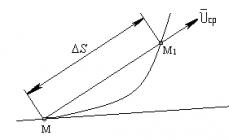We offer a description and photo of the webcap different types and species - this information will help diversify quiet forest hunting and make it more productive.
Look at the poisonous and edible spiderweb mushroom in the photo and try to find it in the forest on your next outing:
Spiderweb mushroom in the photo

Spiderweb mushroom in the photo


The mushroom is edible. Description of the mushroom spiderweb white-violet: caps 3-10 cm, initially spherical pale purple, then silvery or lavender hemispherical with a tubercle, and finally open. The plates remain for a long time under a powerful cobweb blanket connecting the edge of the cap with the leg. The plates are rare, adherent to the teeth, initially gray-blue, rusty-buffy after the veil is opened. The leg is 5-12 cm long, 1-2 cm long, white-purple or covered with white-purple cotton wool, widened at the bottom. The pulp is lavender and has no unpleasant odor.
Spiderweb mushrooms in the photo and description are presented in various versions, this will allow you to recognize them in the forest:


It grows very abundantly in lingonberries and blueberries, among mosses in meadows and at the edge of a pine forest. Sometimes it appears on dry deciduous forest belts, where it is thicker and with a smoother surface.
Its counterpart, the inedible goat webcap (Cortinarius traganus), differs from it in the presence of the smell of acetylene.
The webcap is white-purple edible after preliminary boiling.
Consider others edible mushrooms cobwebs that grow in the forests of central Russia. All edible spiderweb mushrooms with photos and descriptions must be able to be distinguished from poisonous specimens, since they are mortal danger.
 Bracelet webcap
Bracelet webcap  The webcap is excellent
The webcap is excellent
Bracelet webcap (Cortinarius armillatus)

Bracelet cobweb grows in deciduous and coniferous forests

Bracelet webcap in the photo
The mushroom is edible. The hat is up to 5-12 cm, at first it is red-brick hemispherical, covered with cobwebs, then rusty-brown, opened in the form of a lampshade, and finally, open, fibrous with a thin edge. The stem is cylindrical or club-shaped, light brown, 6-4 cm long, 1-2 cm thick, decorated with brick-red bracelets. The pulp is ocher, has no unpleasant odor. Spore powder, rusty brown.
It grows in deciduous and mixed forests under birch and in pine forests among mosses.
Fruiting from August to October.
It differs from inedible cobwebs by the presence of orange stripes on the leg and the absence of an unpleasant odor.
The mushroom is edible but tasteless. Suitable as a filler for dishes and preparations from other mushrooms.
Superb webcap (Cortinarius praestans)

The mushroom is edible. Caps up to 3-12 cm, at first spherical, closed with a cobweb, then hemispherical, finally open, in wet weather very slimy and sticky, in dry form, smooth, brown or the color of "burnt sugar". The plates are thick, whitish with a violet tinge or yellowish. Leg 5-15 cm, whitish, widened at the bottom. The pulp is white, dense with a pleasant smell.
It grows mainly in deciduous forests, but also occurs in conifers. Prefers calcareous soil.
Fruiting from July to October.
It differs from inedible and poisonous cobwebs in the absence of an unpleasant odor.
If you are not sure if you know this mushroom, it is best not to collect it.
In some countries, the excellent webcap is valued on a par with porcini mushrooms.
Above, we looked at what cobwebs look like, suitable for eating, and now it is the turn of the inedible species. It is worth knowing that the poisonous spiderweb mushroom is very dangerous, since it can be fatal.
See what a poisonous spider web looks like in the photo, remember it and under no circumstances pick it up in the forest:
 Lazy webcap
Lazy webcap  Lazy webcap
Lazy webcap
 Goat webcap
Goat webcap  Common webcap
Common webcap
Lazy webcap (Cortinarius bolaris)

Lazy webcap in the photo

Lazy webcap in the photo
The mushroom is inedible. Caps up to 3-8 cm, at first hemispherical, then convex and finally open, clay-yellow, densely covered with large red or red-orange scales. In young mushrooms, the scales are glued to the surface of the cap; the yellow color of the surface is visible only as small gaps between the red scales. In mature mushrooms, the scales diverge along the surface of the cap and lag behind it at the edge. The plates are clay-yellow, then brown, turn red when damaged. Leg 5-7 cm long, 5-15 mm thick, cylindrical, reddish-fibrous, often scaly, like a cap. The pulp is whitish with a brownish tinge. Spore powder yellow-green.
Grows in deciduous, mixed and coniferous forests on acidic soil.
Fruiting from August to September.
It has no poisonous counterparts.
Goat webcap (Cortinarius traganus)


The mushroom is inedible. Massive caps 3-12 cm, at first, spherical and lilac, then hemispherical and, finally, open ocher, with a fringed edge. The plates are buffy-yellow with a violet tinge, later brownish-ocher. The stem is lilac or yellow, with scales, 5-10 cm long, 2-3 cm wide, with an extension at the bottom. The pulp of young mushrooms is white-blue, then ocher with an unpleasant "goat" smell of acetylene.
It grows very abundantly in deciduous and coniferous forests, in forest shelter belts, often in large groups.
Fruiting from August to October.
The goat spider web has no poisonous counterparts.
The goat webcap is inedible due to the unpleasant smell of acetylene.
Common webcap (Cortinarius triviah)


The edibility of the mushroom is questionable. Caps up to 5-8 cm, at first hemispherical, then convex or open, mucous yellow-rusty-brown, dry straw-yellow Plates are white-gray with a purple tint, later rusty-brown. Leg yellow or bluish, 8-12 cm long, 1-2 cm wide, covered with mucus in the upper part, with dark belts in the lower part. The pulp is light, whitish-buffy, in old mushrooms with a weak unpleasant odor.
Grows in deciduous and mixed forests under poplars, birches, oaks and pines.
Fruiting from July to September in large quantities.
It looks like an inedible slimy spider web (Cortinarius mucosus) with a white leg.
Common webcap is not indicated as poisonous mushroom, but its edibility is in doubt.
The webcap is not the most common mushroom. Its family includes almost 40 species. Novice mushroom pickers sometimes confuse the cobweb with other mushrooms and throw it into the basket, not thinking that it can be deadly. Cobwebs are distinguished by a wide variety of shapes and colors. The names of the mushroom species speak for themselves: the spider web is orange, crimson, white-purple, etc.
general information
The spiderweb family got its name due to the cobweb-like veil connecting the mushroom leg with the cap. It is especially noticeable in young mushrooms. In more mature representatives of the family, the cobweb encircles the lower part of the leg with a porous ring. All varieties of this mushroom have a round cap., which in the process of growth becomes more and more flat. Its surface has a smooth or scaly texture and can be slippery or completely dry.
The stem and surface of the cap of the mushroom have almost the same color. The standard shape of the stem is cylindrical, but in some species it has a thickened base. The flesh of the mushroom is usually white, but it can also be colored. The spiderweb family is very fond of moisture. Most often they can be found near wetlands, for which they received the nickname "podolotniki".
Mushrooms of this family are common on the territory of the European part of Russia, but it is quite difficult to find them. Some species of spiderwebs are listed in the Red Book. Cobwebs rarely grow alone. Usually these are clans from 10 to 30 pieces, clustered in humid lowlands. It is recommended to collect them from the end of summer until the first frost.
The most special is the most poisonous spider web. To avoid getting a deadly mushroom in the basket, you need to learn more about it. The cap of the most beautiful adult mushroom reaches a diameter of up to 10 cm. In young mushrooms, it can be in the form of a cone. With the growth of the mushroom, the cap changes its appearance and acquires a flat-convex shape with a blunt tubercle in the center. The surface is dry, velvety, slightly scaly at the edges. The color of the cap can be from red-brown to ocher-brown.
The leg of an adult mushroom reaches 12 cm in length and 1.5 cm in width, it slightly widens towards the base and is covered with noticeable bracelets made of a spider web. The surface is orange-brown, fibrous. The pulp of the mushroom is yellow-buffy, tasteless. Sometimes it has a faint radish smell.
The orange-red webcap (lat.Cortinarius orellanus) is a species of mushrooms belonging to the genus Cortinarius of the Cortinariaceae family. Deadly poisonous, contains slow-acting toxins that cause kidney failure.
Other names:
- Mountain webcap
- Webcap plush
Grows in deciduous and coniferous forests. Fruiting in September - October.
The cap is 3-10 cm in ∅, first convex, then flat, orange-red or orange-brown, the skin is covered with small, dark, fibrous scales.
The pulp is yellowish or brownish, with a rare odor, tasteless.
The plates are rare, adherent to the stem, wide, thick, bright orange-brown. The spore powder is yellow-brown. Spores are ellipsoidal, warty.
Leg up to 9 cm long, 1-2 cm ∅, dense, cylindrical, slightly narrowed towards the base, yellowish, without belts. The cobwebs (cortina) of young mushrooms are golden yellow, then darken.
The fungus is deadly poisonous. Contains the poisonous substance orellanin, which causes pathological changes in the kidneys. Signs of poisoning appear 3-14 days after ingestion of the mushroom. The mushroom retains its toxic properties after boiling in water or drying.
Among the people, spiderweb mushrooms that appear in the forests in late August - early September are called pribolotniki. This is explained by the fact that these fruiting bodies, growing in small groups, can often be found in swampy areas.
The mycological classification contains a description of about 700 species of spider webs, and in the international "Dictionary of mushrooms" there are at least 2000 of them.
September spiderwebs take up more and more space. It is in September that you can see the largest number cobwebs.
Among them: white-purple, evening, smooth-skinned and others. They prefer slightly elevated places at the edge of the forest.
Webcap white-purple

Habitats of the white-purple spider web (Cortinarius alboviolaceus): coniferous and mixed forests, grow in small groups or singly.
Season: Harvesting September - November.

The cap has a diameter of 4-8 cm, sometimes up to 10 cm, smooth, silky, at first hemispherical or bell-shaped, later convex-prostrate with a blunt tubercle in the center. A distinctive feature of the species is a silvery-violet or bluish-violet cap. On the cap there are often radial stripes or strokes of a bluish-purple color.
As you can see in the photo, the leg of the white-purple spider web has a height of 5-12 cm, a thickness of 6-20 mm, often curved, with a strong thickening near the base:
Photo gallery
The color of the stem is also silvery purple or whitish. In the upper part of the leg, the remains of a white bedspread are often visible.

The flesh is whitish or bluish, has purple spots on the cut, and turns purple in old mushrooms.
The plates are adherent with a tooth, infrequent, light gray in young specimens, later light brown in color.
Variability: The color of the cap varies from silvery purple to bluish.
Similar species. By the violet shade of the cap, the white-purple spider web can be confused with the abnormal cobweb (Cortinatius anomalis), which differs in a smooth silky cap, without a tubercle, a gray-fawn leg and a beige-violet shade of the plates, as well as in the absence of a strong swelling of the base of the leg.
Cooking methods: frying, after preliminary boiling for at least 25 minutes.
These photos vividly illustrate the description of the white-purple spider web:
Photo gallery
Evening webcap
Habitats of the evening webcap (Cortinarius vespertinus): coniferous and deciduous forests, in damp places, near swamps, grow in groups.
Season: August - October.
Pay attention to the photo - this spiderweb mushroom has a hat with a diameter of 2-5 cm, smooth:
Photo gallery
Convex at first, later convex-outstretched. A distinctive feature of the species is a convex cap with edges wrapped inward, smooth, ocher or beige-brown. The surface of the cap becomes sticky in wet weather.

The leg has a height of 3-7 cm, a thickness of 5-18 mm, has a thickening up to 3 cm near the base, at first it is white, later creamy, yellow-straw with brownish scales from the remains of the bedspread.

The pulp is white at first, later light creamy, tasteless and odorless. The blades are at first adherent straw-colored, later chambered-adherent brownish-clayey color.
Variability: The color of the cap ranges from yellow-brown to beige-brown to brown.
Similar species. According to the description of the mushroom, the evening cobweb is similar to the common cobweb (Cortinarius trivialis), which differs in that the edges of the cap do not turn inward. A rare species listed in the regional Red Data Books. Status - 3R.
Inedible.
Cobweb smooth-skinned

Habitats of the smooth-skinned penny (Cortinarius allutus): coniferous and deciduous forests, in damp places, near swamps, grow in groups.
Harvesting season: July - October.

The hat has a diameter of 4-8 cm, sometimes up to 10 cm, at first hemispherical, later convexly prostrate. A distinctive feature of the species is a yellow-orange cap with lighter, often wavy edges. With age, the edges of the cap crack.






